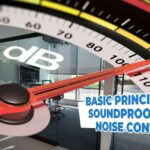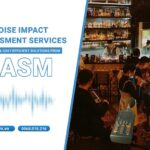Duct sound attenuation testing aims to evaluate the noise reduction effectiveness of duct systems, analyze noise sources, and find optimal solutions to minimize noise in HVAC systems.
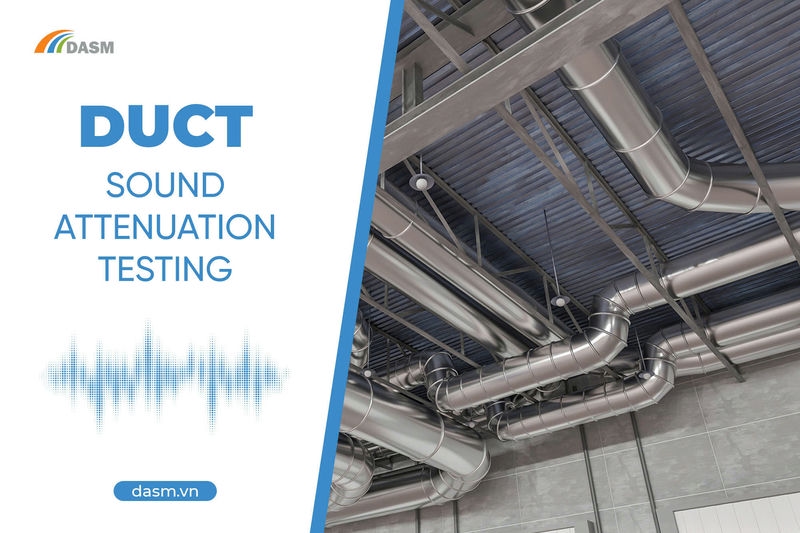
Duct systems in industrial, commercial, and residential buildings play a crucial role in circulating clean and fresh air throughout the space. However, if proper acoustic treatment is not applied, ducts can generate significant noise, affecting both working and living environments. Therefore, HVAC duct noise reduction testing is essential to assess soundproofing efficiency and identify the best noise reduction solutions.
Where Does Duct Noise Come From?
According to acoustic and construction experts, duct system noise can originate from various sources, including:
Aerodynamic Noise: Generated by airflow moving through the ducts, especially at bends, junctions, and branch points.
Fan Noise: Supply and exhaust fans can create vibrations that propagate through the duct system.
Structural Noise: Vibrations from duct materials, particularly if proper damping measures or secure mounting are not in place during installation.
Standard Procedure for Duct Sound Attenuation Testing
Step 1: Preparation of Testing Equipment and Environment
Test Duct: Can be round or rectangular ducts made of various materials.
Sound Measurement Equipment: Sound pressure level meters (dB), measurement microphones, vibration sensors.
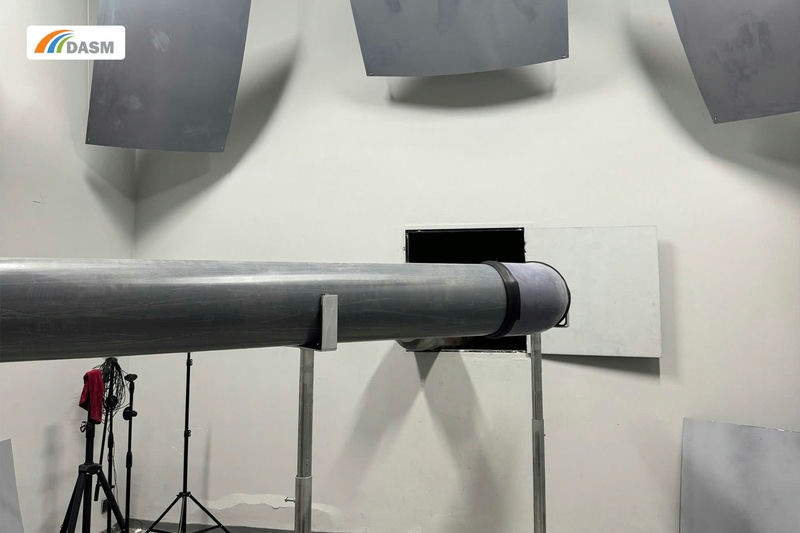
Testing Environment: Acoustic laboratory or real-world test setting.
Step 2: Measuring the Sound Attenuation Performance of the Duct
Measure input noise (sound before entering the duct).
Measure output noise (sound after passing through the duct).
Compare sound level differences to evaluate attenuation performance.
Various factors, such as material thickness, internal acoustic lining, duct length, and structure, influence the duct’s noise reduction capability.
Noise Reduction Solutions for Duct Systems
Based on test results, the following solutions can be applied to reduce duct noise effectively:
Use of Acoustic Lining or Insulation: Applying internal acoustic materials such as glass wool, rock wool, ceramic fiber, PE foam, or vulcanized rubber can effectively absorb sound and reduce noise.
Installing Sound Attenuator Ducts: Specialized attenuator ducts are designed to minimize noise transmission.
Optimized System Design: Avoid sharp bends and sudden changes in airflow direction.
Reduce airflow velocity: Use vibration dampers and secure mounting to prevent structural noise.
Low-Noise Fans: Selecting modern, low-noise fans can help minimize noise generation.
Where to Get Accurate and Reliable HVAC Duct Noise Reduction Testing?
If your building is experiencing excessive duct noise and you need to determine the root cause or find an effective noise reduction solution, DASM Institute of Acoustic Materials Research and Application offers professional duct silencer performance testing services.
DASM Acoustic Laboratory – Vietnam’s First VILAS-Certified Acoustic Testing Facility
DASM’s Acoustic Laboratory is the first in Vietnam to receive VILAS certification from the Bureau of Accreditation Vietnam (BoA) for acoustic measurement and evaluation. This recognition affirms DASM’s expertise in acoustic testing, meeting international standards for material and duct system noise assessment.
What Makes DASM’s Duct Sound Attenuation Testing Unique?
1. State-of-the-Art Testing Equipment
High-precision measurement systems, including VILAS-certified laboratories, wide-frequency measurement devices, vibration, and sound pressure sensors.
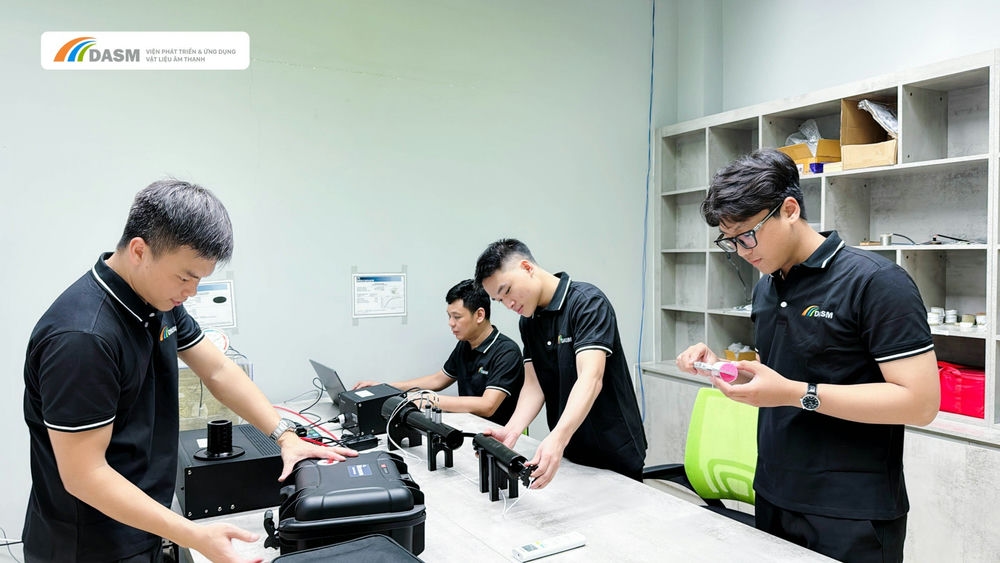
2. Internationally Standardized Sound Attenuation Measurements
Compliance with global acoustic measurement standards such as ISO 7235 and ASTM E477 to ensure accurate noise reduction assessments.
3. Evaluation of Various Duct Types
Testing capabilities for metal ducts, silencer ducts, composite ducts, and various soundproofing materials for HVAC systems.
4. Experienced Acoustic Experts
Highly trained professionals with extensive expertise in acoustics, providing expert consultation and optimal solutions based on real-world test results.
5. Comprehensive Testing Reports for Quality Control and Product Improvement
DASM provides certified testing reports to support quality assurance, regulatory compliance, and product optimization for businesses.
Leading the Way in Acoustic Research and Testing
With expertise in acoustic research and certification, DASM is committed to delivering precise, reliable testing results to help businesses optimize duct systems, improve sound quality, and enhance user experience.
Ductwork acoustic performance testing is a crucial step in assessing noise impact and implementing effective reduction solutions. Selecting the right acoustic materials, designing efficient systems, and using appropriate noise mitigation techniques will significantly improve living and working environments while optimizing HVAC system performance.
Need to Test Your Duct System’s Noise Reduction Capabilities?
Contact DASM Institute today for expert consultation and professional VILAS-certified testing!


